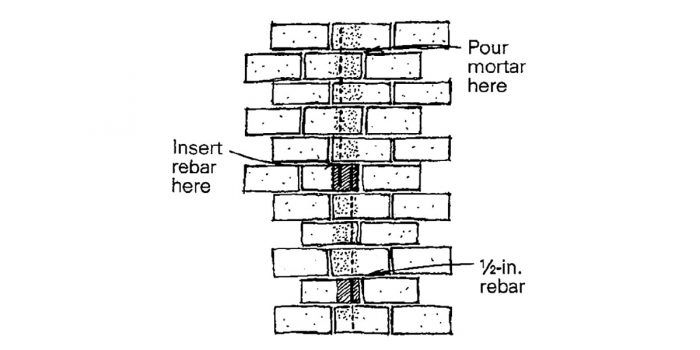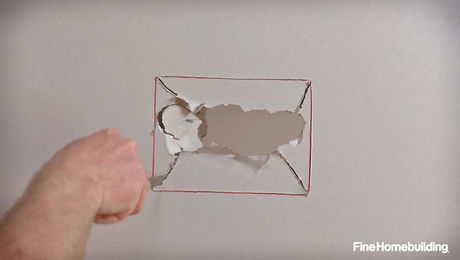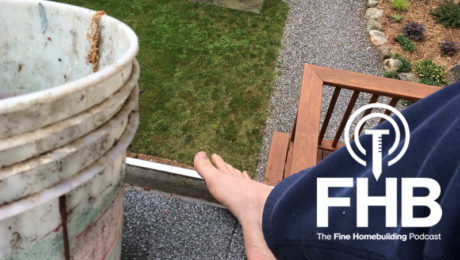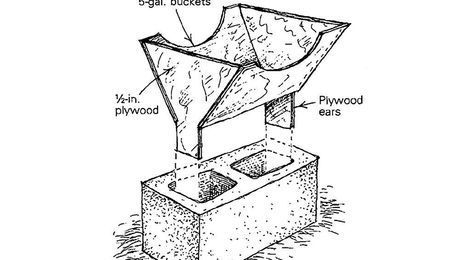
As the old oak tree next to my foundation continued to grow, it exerted enough force on the hollow concrete blocks to create horizontal cracks along the mortar lines. I had the tree removed, but before repairing the cracks I wanted to restore the wall’s structural integrity — without dismantling it.
I began my work by removing an 8-in. by 5- in. section of the block, about halfway up the wall (see drawing). That gave me access to a cavity that ran through the cells of interlocking blocks from the footing to the top of the wall. Next, I inserted a pair of slightly bowed pieces of 1/2-in. rebar — one up and one down. I wired them together where they overlapped at the hole.
Near the top of the wall, I excavated another hole for pouring mortar into the cavity. I inserted a hose with a spray nozzle adjusted to a fine mist to moisten the interiors of the blocks before filling them with mortar mix. A short length of 4-in. PVC pipe and a cut-up milk jug made a good funnel to direct the mortar into the wall. Using the rebars as agitators, I was able to fill the cavities thoroughly with mortar.
I poured these columns in every other cavity along the worst section of the wall, and every fourth cavity in the portions of the wall where the problem wasn’t as serious. Covered with a new coat of plaster, the wall now has its original, crack-free finish.
—Donald L. Anderson, Takoma Park, MD
Edited and Illustrated by Charles Miller
From Fine Homebuilding #61






























View Comments
I've got the same problem. I might have to give that a try instead of paying someone thousands to fix it.
I'd fill with concrete for strength not mortar.
Get the right mortar and it will be as strong a PSI as the concrete. In this case, it's not weight-bearing but lateral support you are going after.